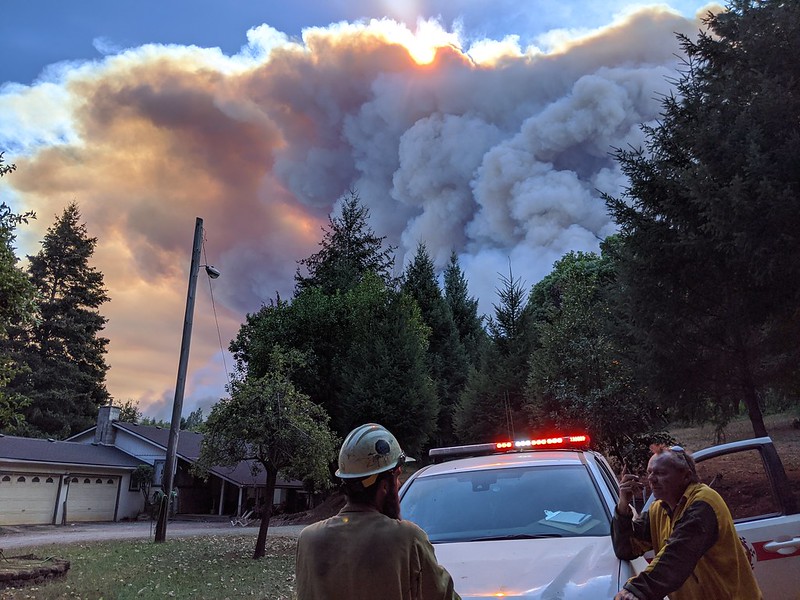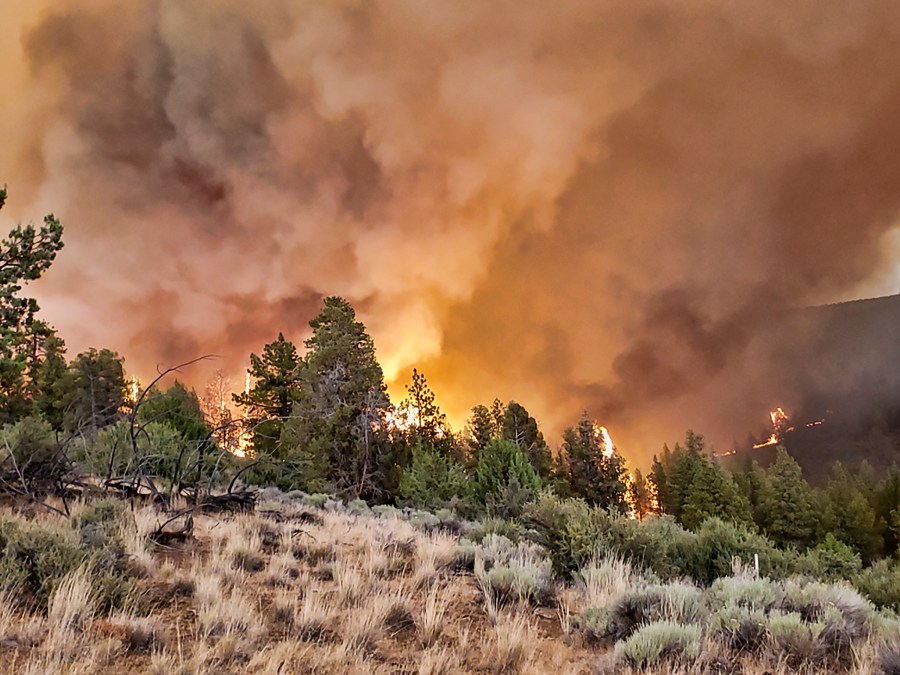PORTLAND, Ore. (KOIN) — Following two years of extreme wildfires across the West, new research out of Oregon State University suggests the flames are far more likely to flow into national forest lands, than out of them.
The research, lead by Chris Dunn and a team of scientists with OSU College of Forestry, combats the current popular theory that destructive wildfires are often ignited on isolated public land before traveling to community spaces.
The study, which was published in Nature Scientific Reports Tuesday, analyzed more than 22,000 cross-boundary fires from 1992 to 2019, and found the overwhelming majority of traveling fires could be traced back to accidents caused by people on private property.

Of the most destructive wildfires observed during the study (fires which destroyed 50 or more structures), OSU said less than 25% originated on Forest Service lands.
“We are long overdue for policies and actions that support a paradigm shift.”
Chris Dunn
OSU Assistant Professor / Forest Engineering, Resources & Management
“In the old framing, public agencies bear the primary responsibility for managing and mitigating cross-boundary fire risk and protecting our communities, with their efforts focused on prevention, fuel reduction and suppression,” Dunn stated in an OSU release. “This has been the dominant management approach of years past, which is failing us.”
As the research was published just a few weeks after the Forest Service release of their new 10-year plan, Confronting the Wildfire Crisis, Dunn said the research suggests that, “We are long overdue for policies and actions that support a paradigm shift.”

Looking at an area of nearly 141 million acres across 11 states and 74 national forests, the study found that within the last 27 years, over 17 million acres were destroyed by cross-boundary fires.
Based on the research, almost half of the total acres destroyed occurred on public Forest Service land.
“The Forest Service’s new strategy for the wildfire crisis leads with a focus on thinning public lands to prevent wildfire intrusion into communities, which is not fully supported by our work, or the work of many other scientists, as the best way to mitigate community risk,” Dunn said.
According to the research, more than 60% of cross-boundary fires were ignited on private property, and only 28% originated in national forests.
The study showed human activity to be the leading cause of cross-boundary wildfires.
“A substantial portion of the wildfire problem is a community destruction problem,” added Michael Caggiano of Colorado State, a partner in the study. “The Forest Service can contribute to an advisory or facilitation role to address the home ignition zone, including fire resistant design and zoning, and fuels management on private lands, but states, local government and homeowners are better positioned than the USFS to manage those components of wildfire risk.”

Dunn believes the threat of wildfires might be mitigated if we begin to recognize and shift the responsibility of combating and preventing fires away from Forest management to fire management.
According to Dunn, this shift would include letting some fires burn to develop ecological benefits and reduce fire risks, along with creating a strategy to redistribute resources to regions that need them most.
“The only way we are going to address the wildfire problem on large public lands at the scale of the challenge is through the effective and efficient management of wildfires over the long run,” Dunn stated. “Our research has significant potential to inform and guide development of effective cross-boundary risk mitigation strategies … The main source of our communities’ exposure to wildfire risk is clearly not our national forests.”
The research findings show cross-boundary fires will likely increase. Based on this, Dunn said “embracing a collaborative governance and cross-boundary partnerships,” will be critical to managing multi-jurisdictional fires moving forward.
According to Dunn, new science-based policies, such as Oregon’s 2021 omnibus wildfire bill, which required high-risk region homes to mitigate fires within the home ignition zone, improved wildfire response, and developed landscape resilience, will be crucial to wildfire management.
Dunn called the legislation, “the type of comprehensive policy we need to address the multitude of impacts wildfires have on communities, ecosystems, industry, etc. It recognizes that the Forest Service is neither the sole source of the problem nor the sole solution to the problem, but rather one of many pieces to a paradigm shift society needs to make.”
